Contact us today:
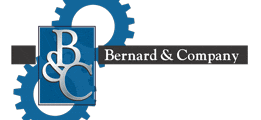
(847) 934-4500
tdaro@bernardandcompany.com

Contact us today:
(847) 934-4500
tdaro@bernardandcompany.com
Getting started with live tools…
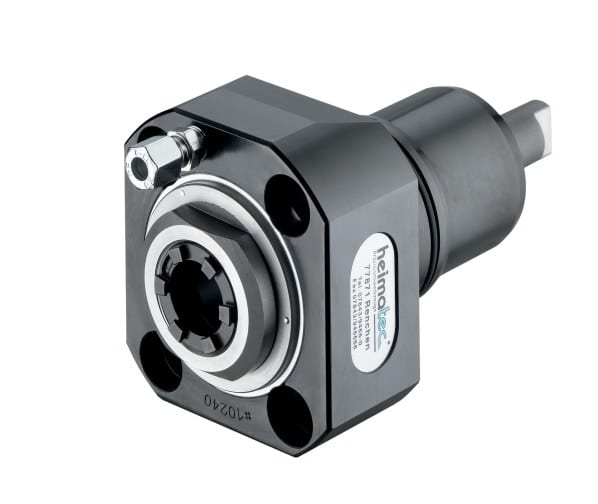
A flexible tool adapter system can be a big time and money saver, if properly utilized and properly designed for maximum power transmission and accuracy in alignment.
When any metalworking manufacturing facility, whether captive or job shop, makes the substantial investment in a new lathe, they are often looking for ways to streamline the manufacturing process. The smarter you are when choosing the live tools for your job, the more efficient the machine becomes. Finding a supplier of live tools who offers high-quality, high-performance products that will allow you more flexibility on the first big job and into the future in your operation is the key.
The first tool feature to consider is the output needed. Standard ER output or quick-change? Do you need coolant through the tool capabilities? Does the tool meet your requirements for precision and performance, including the necessary torque output to complement the machine? Are the tools designed according to the specifications of the lathe manufacturer?
When you look at an ER output, does it give you enough flexibility or do you need a more flexible machining system that will allow you to use the same tool for different applications. If more flexibility is required, then you may want to consider tooling with a system that features adapters for a variety of tools without the cost of new complete toolholder assemblies for each tool needed. However, when you look at such systems, be sure they feature a rigid polygon drive system design to prevent power transmission and alignment issues. Such systems seem appealing, because the live tool stays in place and only the adapter and collet get changed out with each new tool. However, less sophisticated though inexpensive systems will compromise the accuracy of your work. At that point, the few dollars saved will mean very little, compared to the scrap and downtime resulting.
If changeover time is critical, such as when working on a “family of parts,” the option of a true “quick- change system” might be more
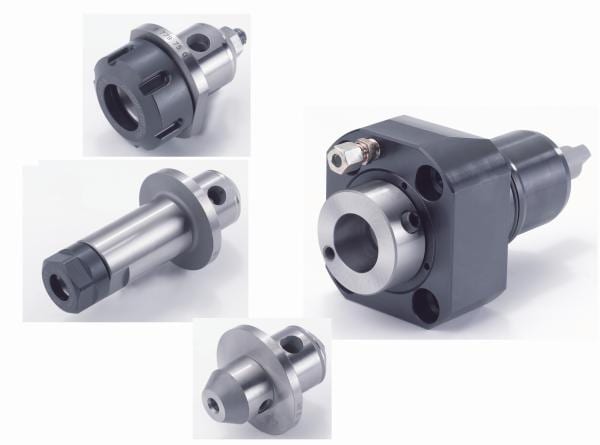
A true quick-change system can be set offline and quickly installed, but it must be considered in light of today’s AND tomorrow’s workload.
beneficial. Adapters can be set offline and ready to go for minimal changeover time.
When coolant-thru tools are selected, it is imperative you first check the machine specifications to be sure your tool is capable of handling the coolant pressure of the machine. In general, your internal coolant live tools should be able to handle 1000 psi or more.
If your live tool is constructed with large, high accuracy bearings, the tool will have excellent rigidity and premium cutting performance, with minimal runout. (0.0002” or 0.006mm is a desirable goal.) The bearings, combined with ground, paired and high accuracy gears, make for tools that are consistent and long lasting. Bore tolerance is absolutely key in maintaining proper bearing load and this factor should never be compromised.
In addition, you should consider the many applications that can be accomplished with the proper live tool. You can purchase speed increasers for higher rpm, gear reducers for added torque, adjustable angle tools for compound angles, multiple-spindle tools for additional capacity, or gear hobbing tools for spline or gear cutting. Most of those items are standard catalog devices, but one more piece of advice: never shy away from the custom tool, when appropriate and justified by the job you have in-shop today, as well as the ones you might have tomorrow. A good tooling supplier will work with you to produce custom tools at reasonable prices, but the supplier must be very reliable, so look for one with grinding, finishing and perhaps even heat treating in-house or very closely monitored, to do such work. Additionally, be certain the supplier has local support and tools can be repaired or reworked quickly and correctly.
The workpiece materials are always a driver. Those of you doing medical machining know this well. Buying a less expensive or lower featured tool to work cobalt chromium and titanium is a really bad idea, to be blunt.
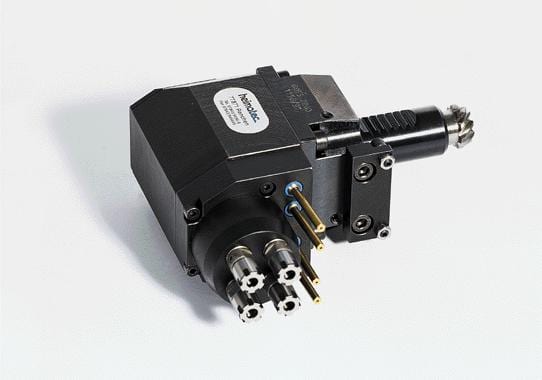
Custom tools, though usually dedicated to a particular application, can be the best solution, IF the design and construction of the tool is solid and the application engineering and after-sale support is available locally to service it.
On a practical level, always check the supplier for inventory and source of supply. Today, when your customers are demanding faster response times and more cost off-loading, you can expect the same from your tooling supplier. Likewise, application and engineering assistance should be available from local sources to support your tool choices.
The bottom line is the bottom line for most of us today. However, always consider the future jobs when purchasing tooling systems for your new and existing lathes. What might seem a bargain might not be, after the first big job is completed.
DIN and ABEC standards are the norm in industry and your supplier should be willing to supply all necessary documentation on request. Shortcuts on quality are never, repeat never, worth the short-term savings.
I hope this short primer on tooling will assist you in equipping your next machines.
For addition information or inquiries, please contact:
Preben Hansen, President
HEIMATEC INC.
16 E. Piper Lane Suite 129
Prospect Heights, IL 60070
Phone: 847-749-0633
Fax: 847-749-2445
Email: info@heimatecinc.com
Website: www.heimatecinc.com
—
Heimatec is an international tooling manufacturer, based in Renchen, Germany. Its experienced staff is dedicated to providing customers the most innovative tooling technology possible. In 2010, the company opened Heimatec Inc. in Prospect Heights, IL, near Chicago, to serve its growing North American customer base with sales and service, plus an extensive inventory of products. Heimatec serves the auto, aero, medical, off-highway, rail, energy, woodworking, composites and other industries, as well as an ever-increasing number of machine tool OEM’s worldwide.
Continue readingNew Heimatec system reduces downtime, eliminates costly changeover; ideal for the busy job shop or production department
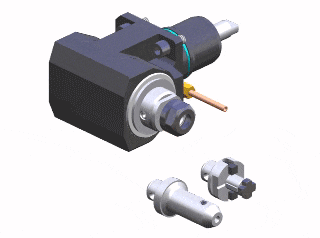
HT Series quick-change tool adapter system from Heimatec requires only a single clamping bolt turn for changeover. Click the image to view the animation.
Heimatec, a world leader in live tools, angle heads and multi-spindle drill heads, announces immediate availability of its newest development, the HT Series quick-change tool adapter system. With the HT Series onboard, users do not need to change tooling, only the adapter and that action is accomplished with a single clamping bolt. In this way, collet assemblies can be preset outside the machine tool, then simply swapped out as needed.
Whether a one-off job shop or long run production department, downtime on any machine tool is costly and the HT Series reduces changeover from an average of 15-20 minutes down to about that many seconds. The tool head stays in the machine, so less probing is needed after the changeover, as well.
HT Series offers users a lower initial investment, minimized tooling time, reductions of tooling quantities and related costs, plus considerably lower inventories. Further savings are realized by the high degree of flexibility in the system, the shortest gauge line of any system on the market, meaning no additional tool length consumed, standard coolant-through design, exceptional repeatability to 0.0002” and easier handling of the components, resulting in lower setup costs.
This new quick-change system is available from Heimatec with all common outputs, including collet, extended collet, collet with tension and expansion for tapping, weld-on, weld-on extended, arbor, hydro-chuck, indexable insert holder, shrink fit and blank/plug design.
Interested parties can see the HT Series in action on youtube at:
http://www.youtube.com/watch?v=Wl7_978FQ94&NR=1
For further information and literature on this new product, please contact:
Preben Hansen, President
HEIMATEC INC.
16 E. Piper Lane Suite 129
Prospect Heights, IL 60070
Phone: 847-749-0633
Fax: 847-749-2445
Email: info@heimatecinc.com
Website: www.heimatecinc.com
—
Heimatec is an international tooling manufacturer, based in Renchen, Germany. Its experienced staff is dedicated to providing customers the most innovative tooling technology possible. In 2010, the company opened Heimatec Inc. in Prospect Heights, IL, near Chicago, to serve its growing North American customer base with sales and service, plus an extensive inventory of products. Heimatec serves the auto, aero, medical, off-highway, rail, energy, woodworking, composites and other industries, as well as an ever-increasing number of machine tool OEM’s worldwide.
Continue readingTo everything, there is a REASON…turn, turn, turn…
Here’s your best reason to stop by our booth:
At this year’s IMTS, Heimatec will display its live tooling in a unique way…a live demo on a rotating machine tool turret. Come and see the show!
Heimatec, a world leader in live tools, angle heads and multi-spindle drill heads, today announced immediate availability of its newest development, recently unveiled for IMTS.
U-tec is the company’s patented flexible tool adapter system that allows a standard ER output live tool to accept various adapters for different applications. This allows users the ability to have quick changeover of tools on almost any lathe, using a single live tool, without having to commit to a quick-change system on the initial purchase. A facemill adapter, for example, can be quickly positioned into the standard holder, without the need for a completely new base being installed. This significantly reduces inventory costs as well as changeover time, for the busy shop.
The U-tec system, according to Heimatec Inc. President Preben Hansen, “…represents a real improvement in lathe and mill/turn tooling design. U-tec allows great user flexibility, while a polygonal drive system ensures extremely high power transmission stability and faster set-up with absolutely no loss in performance or accuracy, because the live tool base remains in position and only the adapter and collet get swapped.”
He went on to explain the unique collet nuts on the U-tec system have internal threading for rigid mounting and that this new tool adapter system enables the actual cutting tool to be brought into closer proximity to the bearing, thus further improving performance in use. This benefit results from the short and compact tool length design. Internal coolant up to 2000 psi(140 bar) is provided standard.
Every adapter in the U-tec system comes complete with any necessary clamping nuts and adapters are immediately available in face mill style, ER extensions, side lock, shrink fit, hydraulic and blank.
The U-tec system is available for all major turning machines on the market today. Heimatec currently manufactures over 10,000 live tool types.
For further information and literature on this new product, please contact:
Preben Hansen, President
HEIMATEC INC.
16 E. Piper Lane Suite 129
Prospect Heights, IL 60070
Phone: 847-749-0633
Fax: 847-749-2445
Email: info@heimatecinc.com
Website: www.heimatecinc.com
—
Heimatec is an international tooling manufacturer, based in Renchen, Germany. Its experienced staff is dedicated to providing customers the most innovative tooling technology possible. In 2010, the company opened Heimatec Inc. in Prospect Heights, IL, near Chicago, to serve its growing North American customer base with sales and service, plus an extensive inventory of products. Heimatec serves the auto, aero, medical, off-highway, rail, energy, woodworking, composites and other industries, as well as an ever-increasing number of machine tool OEM’s worldwide.
Continue readingMachining center used at University of Hawaii Institute For Astronomy to produce one-off diffraction gratings for remote sensing instruments used with telescopes and other research instrumentation

University of Hawaii Institute For Astronomy telescopes are able to see the solar system and into deep space with greater clarity than at any other location on the planet, according to Dr. Ritter.
When you enter the laboratories at the University of Hawaii’s Maikalani Institute For Astronomy (IFA) Advanced Technology Research Center on the island of Maui and hear talk of light years, dark energy and space telescopes, it quickly becomes apparent that this is not your typical machine shop. The machining for instrumentation developed here involves some of the most sophisticated techniques on Earth, which is a pun of cosmic irony, as the workpieces produced here are primarily used to help evaluate happenings in deep space.
The Maikalani facility provides laboratory workspace for Physicists and Astronomers performing advanced 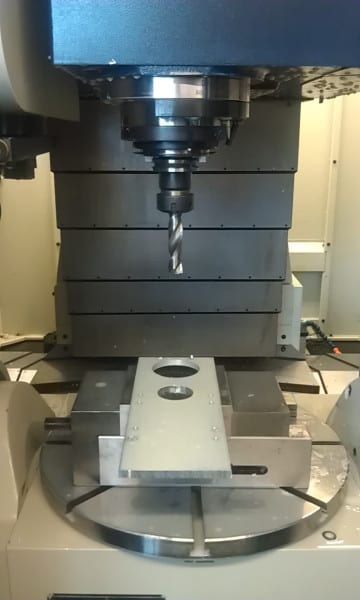
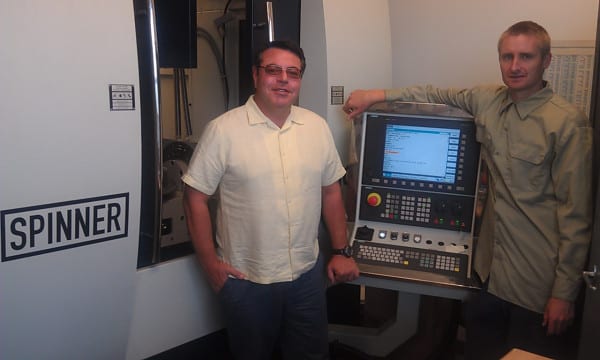
As Ritter explains, “Accuracy is everything in optics. Most of the machining centers I evaluated were in the +/-25 micron (~0.001”) range for accuracy. We settled on a 3+2 axis machine with 100 nanometer precision scales with interferometric remapping on the 840D sl CNC. Because we do experimental fabrication work and optics typically need to be made to micron level tolerances, it was imperative to have a feedback control on the machine tool with a known accuracy and predictable degrees of variation.” As an example, though not suitable for visible light, the optics Ritter discussed required accuracies of a few microns-good enough for infrared optics. Other technologies being developed by Ritter at IFA include novel photonic meta-materials for future space telescopes intended for studying exoplanets and the evolution of our universe.
Dr. Ritter cited the age-old challenge for educational 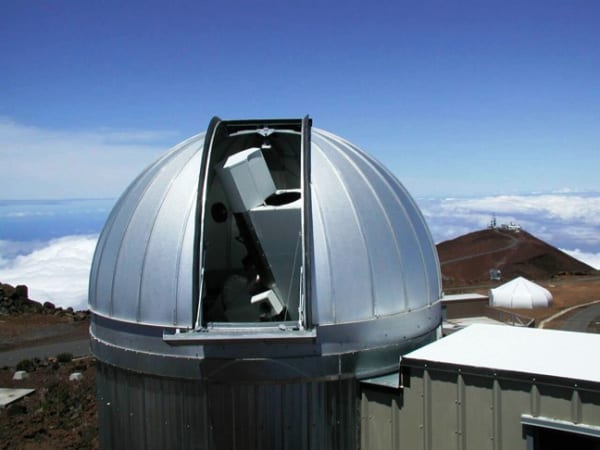
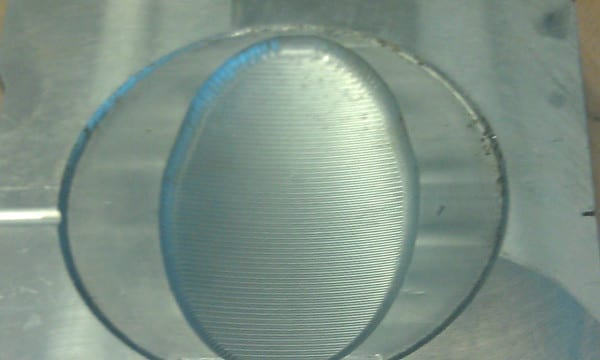
Sample parts produced on Spinner machine, mostly copper and aluminum, include many that become diffraction gratings used on highly sensitive instruments for deep space exploration projects
While invariably the smart guys in any room, Dr. Joe and John Valliant are not machinists by trade, so they were using both Shopmill and CAD/CAM programs like Mastercam with the highly-specialized G-code generator and post-processor needed to create precision path cuts, then running them directly on the mill to quickly begin cutting, an absolute necessity in their one-off world of custom parts.
“For some optics, the millions of coordinates we use for every workpiece are pushing the control to the limit, but it responds well. Plus, the teach-in functionality of the Sinumerik 840D sl CNC and its software package keep us running very efficiently,” according to Valliant, who worked in the lab as a University of Hawaii-Maui college student and has learned CNC machining on the go. In an environment where 0.1 of a wavelength of light is the desired target for accuracy, this is no small achievement. Valliant adds, “Once you’re comfortable with this machine and the control, the process is very intuitive.”
Dr. Ritter, who is constantly pushing the boundaries on novel orbital space telescope designs, notes that the state of Hawaii and the island of Maui in particular have some of the best conditions on Earth for nighttime telescopic observation, as well as the best in the world for daytime solar viewing. The National Science Foundation will soon build the world’s largest solar telescope on Maui. Maui is a little known hotbed of technology development. In addition to solar research and deep space observations, the Institute for Astronomy partners with many nations to push the boundaries of human knowledge, while training future scientists.

Mac McPherson, the Spinner machine dealer and importer for North America, adds, “We do 
“Na Kilo Hoku” means “the watchers of the stars” and the instrument components made here certainly help them do just that — and also gain knowledge from the cosmos for us all.
For more information on this story, please contact:
Joe Ritter, Ph.D
Physicist and Lab Director
University of Hawaii Institute For Astronomy
Maikalani Advanced Technology Research Center
34 Ohia Ku St.
Pukalani, HI 96768
Phone: 808-573-9521
Web: www.ifa.hawaii.edu
Or
Robert McPherson
MacHill Machinery Solutions, LLC
(dealer for Spinner machines)
2245 C-132 Ashley Crossing Drive
Charleston, SC 29445
Phone: 843-873-6888
Web: www.machillmachinery.com
Or
SIEMENS INDUSTRY, INC.
DRIVE TECHNOLOGIES
MOTION CONTROL
MACHINE TOOL BUSINESS
390 Kent Avenue
Elk Grove Village, IL 60007
Phone: 847-640-1595
Fax: 847-437-0784
Web: www.usa.siemens.com/cnc
Email: SiemensMTBUMarCom.sea@siemens.com
Attention: John Meyer, Manager, Marketing Communication
Follow us on Facebook: www.facebook.com/SiemensCNC or Twitter: www.twitter.com/siemens_cnc_us.
—
Siemens Industry Sector is the world’s leading supplier of innovative and environmentally friendly products, solutions and services for industrial customers. With end-to-end automation technology and industrial software, solid vertical-market expertise, and technology-based services, the sector enhances its customers’ productivity, efficiency and flexibility. With a global workforce of more than 100,000 employees, the Industry Sector comprises the Industry Automation, Drive Technologies and Customer Services Divisions as well as the Metals Technologies Business Unit. For more information, visit http://www.usa.siemens.com/industry.
The Siemens Drive Technologies Division is the world’s leading supplier of products, systems, applications, solutions and services for the entire drive train, with electrical and mechanical components. Drive Technologies serves all vertical markets in the production and process industries as well as the infrastructure/energy segment. With its products and solutions, the division enables its customers to achieve productivity, energy efficiency and reliability. For more information, visit http://www.usa.siemens.com/drivetechnologies.
Continue readingTooling supplier expands headquarters, offers specific machine tool brand product lines, detailed in new full-specification catalogs
Heimatec, Inc., the North American operation for a world leader in live tools, angle heads and multi-spindle drill heads, today announces it has relocated to substantially larger headquarters near Chicago.
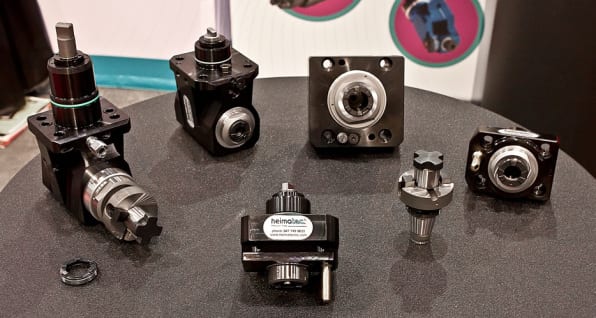
Heimatec will display a complete line of high-quality live tools for all major turning machine brands, as well as angle heads for milling applications, during the upcoming IMTS 2012 in Chicago. The company will feature its unique HT quick-change system and patented u-tec flexible machining system.
According to company president Preben Hansen, “We made this move to increase our inventory and our staff to better serve the growing ranks of our customers, both end users and distributors alike.” The new location is in Prospect Heights, Illinois, previously home to Heimatec.
It represents a 50% increase in the office and warehouse capacity for this growing supplier to the North American machine tool market. Hansen anticipates hiring new staff for the facility soon.
In related news, Heimatec has introduced complete lines of tooling, each designed for specific brands of machine tools, including the major builders of turning machines used in the North American market, such as Haas, Okuma, Mazak, Spinner, Miyano, Nakamura and others. This full-specification literature by machine brand is immediately available from the company in print and online pdf versions. Interested parties should contact the company. Heimatec also offers its new corporate capability brochure, in which all lines are presented.
For further information on this news release, please contact:
Preben Hansen, President
HEIMATEC INC.
16 E. Piper Lane Suite 129
Prospect Heights, IL 60070
Phone: 847-749-0633
Fax: 847-749-2445
Email: info@heimatecinc.com
Website: www.heimatecinc.com
—
Heimatec is an international tooling manufacturer, based in Renchen, Germany. Its experienced staff is dedicated to providing customers the most innovative tooling technology possible. In 2010, the company opened Heimatec Inc. in Prospect Heights, IL, near Chicago, to serve its growing North American customer base with sales and service, plus an extensive inventory of products. Heimatec serves the auto, aero, medical, off-highway, rail, energy, woodworking, composites and other industries, as well as an ever-increasing number of machine tool OEM’s worldwide.
Continue reading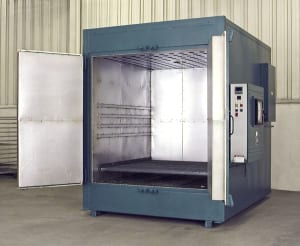
This Grieve cabinet oven features 6” insulated walls, subway grating shelf at the bottom of the oven workspace rated for 2500 lb. loading and four (4) pairs of shelf supports rated at 200 lbs. per shelf.
Controls on No. 997 include a digital programming temperature controller, manual reset excess temperature controller with separate contactors, recirculating blower airflow safety switch and 10” diameter circular chart recorder.
For more information, please contact:
THE GRIEVE CORPORATION
500 Hart Road
Round Lake, IL 60073-2898
Phone: (847) 546-8225
Fax: (847) 546-9210
Web: www.grievecorp.com
Email: sales@grievecorp.com
Attention: Frank Calabrese, VP
Handles parts up to 240” long at major aircraft manufacturer

That is exactly how one customer’s problem became an opportunity for Bertsche. It began as a simple customer request, where a Tier 1 manufacturer of large airplane structural assemblies is required, on a daily basis, to modify semi-finished and partially assembled detail parts. The parts are required for large airplane structural assemblies. Plus, the parts are needed just prior to final assembly and so this manufacturer was searching for an all-purpose machine that could quickly be step up to run a wide variety of parts to support several different airplane programs.
To better appreciate this problem, it helps to understand the difficult work environment.
Airplane manufacturers often start the manufacture of parts for a specific airplane order well before all detail parts for that airplane have been fully defined. This is great for the airlines but complicates the process of building planes to a tight schedule. Furthermore, airplane manufacturers must have considerable flexibility built into their processes, to allow last-minute modification to parts that will be needed shortly thereafter in final assembly.
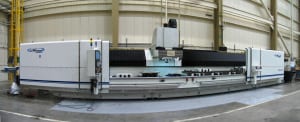
For Bertsche, the customer’s initial request was simple, namely, replace three small footprint machining centers with a single machine tool that could quickly be reconfigured with tools, workholding fixtures and programs to manufacture the parts needed to complete a specific airplane build (ship) set. Specialized workholding, developed over many years for legacy (older model, mature) airplanes had to fit onto the new machine as well as new workholding needed for the latest model airplanes. Setup time needed to be minutes or, at most, hours and not days.

Having developed a long X-travel, raised-carriage, fixed bed machining center (Xi-Mill) for single or dual work zone long part machining, Bertsche’s solution was to expand the capabilities of the existing machine design by develop a new type of machine, the X-Flex Center, configured with multiple pallet receivers instead of the typical T-slot tables. This allowed the customer to load multiple workholding fixtures into the machine and have them ready to run on short notice. Equipped with a setup changer, the machine could quickly be reconfigured by pulling new workholding fixtures from storage and loading them into the machine to match constantly changing production requirements and schedule changes. Having the dual work zone feature with each work zone having its own dedicated tool changer, the operator was able to load newly tooled fixtures in one zone, while parts were being machined in the other.
In keeping with lean operating principles, this solution was an FMS that didn’t require all the automation, expense and overhead to manage. The machine was easily overseeable, pragmatic and affordable, plus it allowed the manufacture of a wide range of parts with just a single machine. As the project unfolded, however, many divergent new requirements were identified as desirable and this began to conflict with the original “as concepted” solution.
Long parts, short parts, 4-axis machining, smart fixture control, automatic fixture recognition,
integral thermal growth compensation, video camera actual cutting display, different materials, aluminum, titanium, composite (CFRP) parts, sandwich materials, materials separation, special water filtration, materials separation and other considerations arose, with each requirement mandating additional machine functionality.
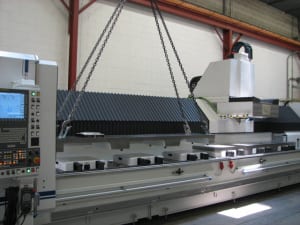
To meet these requirements, a zero point clamping system was incorporated into the base table, which allowed the pallet receivers to be decked with various long part handling special tables. The zero point clamping features meant that different tables could be quickly installed, with a high degree of repeatability (0.0002” repeatability for a 120” long table). Large and heavy special tables could be craned overhead, lowered into place, clamped and locked down to do production-ready machining in minutes.
For further flexibility, a vacuum workholding system was added to allow any of the pallet receivers to use both mechanical and vacuum workholding.
Each work zone was equipped with a CNC part program addressable connection port, so that special fixtures with complex part clamping (part program actuated) could be controlled by the programmer.
Being a very large machine with two different work zones and machining parts that only 24 hours later were used in final airplane assembly also meant there would be zero tolerance for error or delay. A video camera view port was provided to allow the operator to see what was happening in one work zone, while the other zone was being setup for the next part.

Switching from aluminum parts to CFRP composite parts required a chip and water filtration system to convey both chips and sludge-like material. The waste material needed to be separated from the coolant. First, the chips from composite sludge, then the coolant suspended CFRP fines had to be filtered from the coolant. Material separation and disposal was not just an operational issue, it was also a facility and hazardous waste disposal issue. The machine was equipped with a flush and wash feature that allowed the entire work zone to be washed down and cleaned before the next material was machined. For chip collection and removal, a conventional chip conveyor was used to transport chips out of the machining area. The chips were separated and put into a dumpster. The cutting fluid carrying liquid and suspended composite particles was pumped to a cyclonic separator, where the sludge was separated and fleece paper filtered for separate disposal.
For long part machining, “hole pattern” to “hole pattern” accuracy was critical and thermal growth of the part relative to the machine was factored into the design. Knowing the temperature of the part (so that appropriate length compensation could be applied) was critical when parts needed to snap together at assembly. To this end, each work zone was equipped with a material sample station. A sample piece of the material was mounted, its temperature measured and the information fed to the CNC for corresponding machining thermal positioning adjustment.
To interface with the shop floor managing network, a front-end PC equipped with bar code reader allowed the operator to scan in work order information and, together with pallet loading instructions, send the right part program for the part(s) to be manufactured as needed to meet daily production requirements. The operator loaded workholding tooled pallets, as directed, to a specific pallet receiver location, while the system verified that the correct tools were available in each tool changer. The operator could then arm (enable) the work zone in which machining was to next take place and wait until the part(s) in the other zone had been manufactured. The process repeated throughout the day with nearly 100 % spindle and operator utilization in a “one off” demand driven environment.
To ensure the correct tools of size and length were being used, each ATC was equipped with its own tool length setter. Each tool could be measured, with offsets adjusted prior to machining. A spindle probe, one for each work zone, allowed fixtures and parts to be probed for location with corresponding work coordinate adjustments. A special marking tool allowed information to be written on a part in easily readable script.
While not every manufacturer has these same complex problems, having such a flexible large machine to make both long and short parts makes sense for even the smallest manufacturer. As a result, any manufacturer who needs flexibility and reconfigurable worktables can quickly adapt his machine tool to meet a wide variety of such machining needs.
For more information contact:
BERTSCHE ENGINEERING CORPORATION 711 Dartmouth Lane Buffalo Grove IL 60089 Phone: (847) 537-8757 www.bertsche.com Attention: Rich Bertsche, President rwb@bertsche.com
Agency contact: Tim Daro Bernard & Company 847-934-4500 tdaro@bernardandcompany.com
Continue reading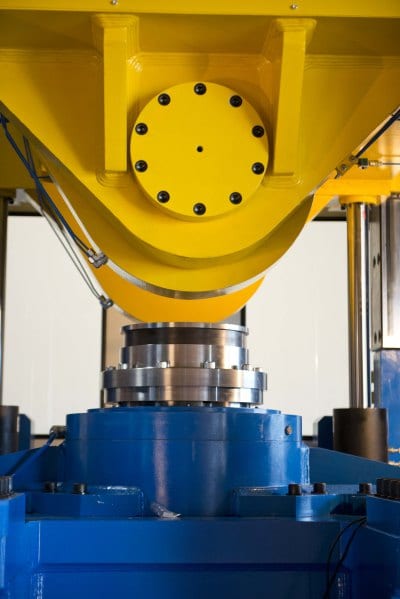
Mark Cunningham operates a Gleason gear shaper with Siemens CNC onboard. “It’s very user friendly,” he says.
Using CNC technology on advanced machine tools helps company sell its products worldwide
Roscoe, Illinois is home to many more gear companies than your average town of 10,000 people, but the reason is obvious. During the peak of the machine tool boom in nearby Rockford, it was critical to have these important components made locally. Over the years, that market has changed and so have the gear companies here, each taking its expertise in other directions to offset the decline in local machine tool building.
Forest City Gear Inc. took a different track to remain competitive globally. As Fred Young, CEO of the company, which was founded in 1955 explains, “We decided long ago to do two things. First, to make the very best fine and medium coarse pitch gears in the world, and to do so by using the best machines, people and quality assessment practices possible. Second and just as important, we became committed to reinvesting our company’s profits in newer and better machinery, based on the global standards and the ongoing technical advancements made by machine tool builders around the world.”
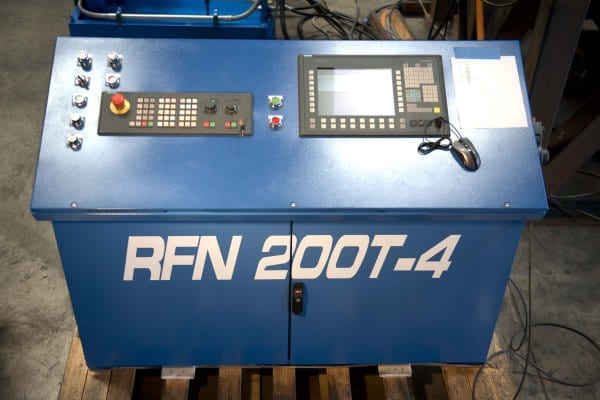
Kevin Chatfield has worked on CNC machines for 20 years. Here, he uses a Samputensili gear grinder for internal, external and form grinding. “No other CNC can do all the work the Siemens does.”
This precision gear and spline maker performs nearly every aspect of production in-house, including blanking, turning, hobbing, shaping, milling, gear grinding with form wheels and generating grinding, thread grinding, broaching, honing, straightening, laser marking, magnetic particle inspection, metal-etching, CMM, hardness testing and final surface inspection. Forest City Gear continues to subcontract heat treating and plating. The blanking department, though relatively new, has been expanded several times to keep pace with increasing production. The company boasts nearly every leading brand of gearmaking machine tool on the world market, because, as Young puts it, “We really do put our money where our mouth is, to use that old expression. In a typical year, we invest between 25 and 40 percent of our gross sales back into better gear machines and metrology.”
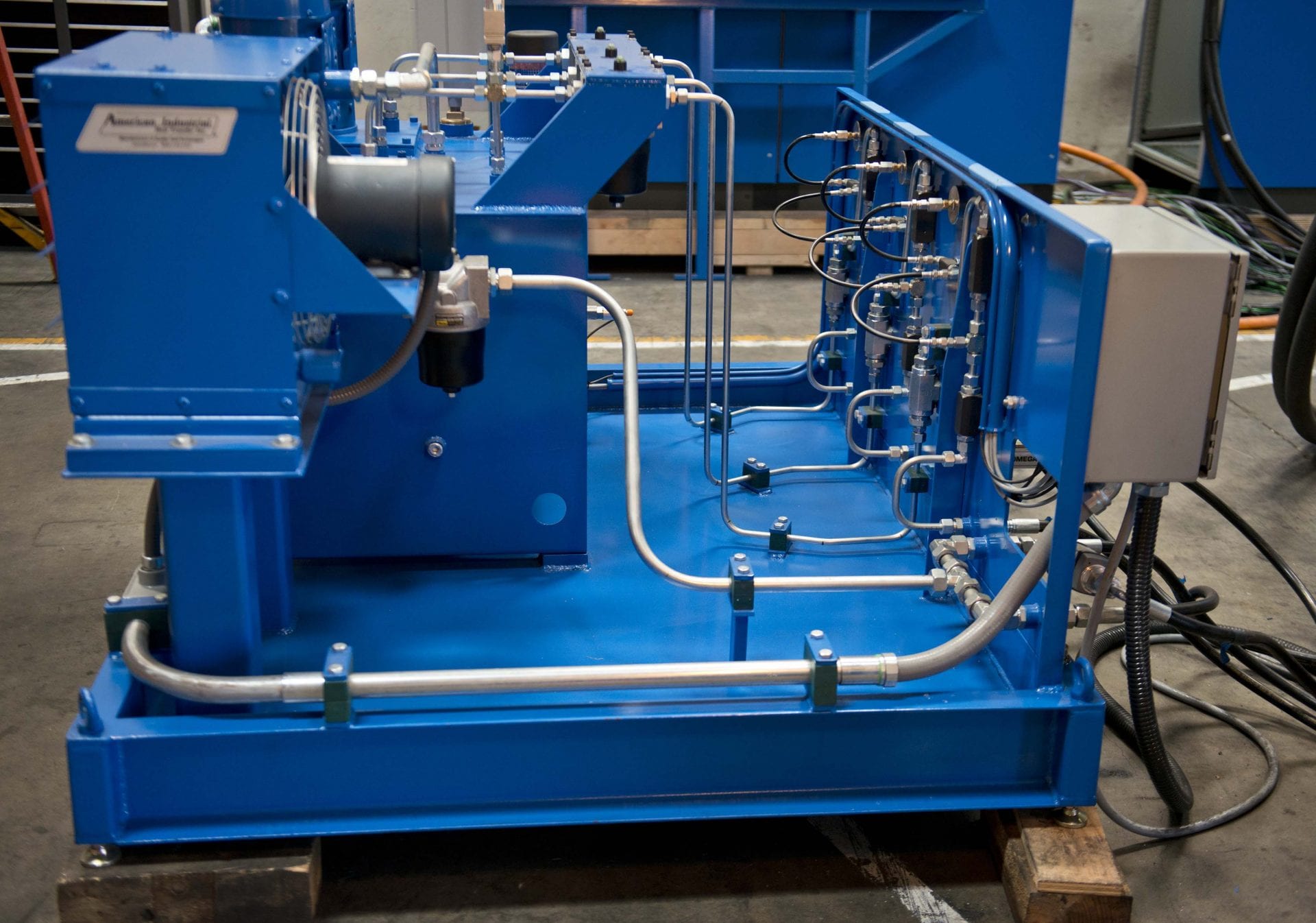
Brian Turnbull runs various machine tools, including a Hoefler gear grinder, and notes, “The CNC is easy-to-use, very easy to layout and gives me no problems navigating.”
Among the most advanced gearmaking machines in this shop are four Gleason shapers, two Samputensili grinders (form and generating style) plus a Hoefler gear grinder. All these machines have something in common.
At the heart of any machine tool, of course, is the CNC that drives it, controls the motion, detects and integrates all the cutting parameters, feeding back that information to the computer logic of the control to ensure the part being made is as close as possible to the programmed specifications. Meanwhile, the ergonomic or operator-to-machine interaction must always be considered, because a control that’s too difficult to learn and use will result in substantial and costly delays in production. While Forest City Gear has the classic mix of longtime and newer employees, who all bring a variety of computer knowledge and machining skills to the job, this company has consistently sought the most advanced equipment on the market, as part of its “Excellence Without Exception” motto and its practical desire to stay ahead of the competition in the global gear market.
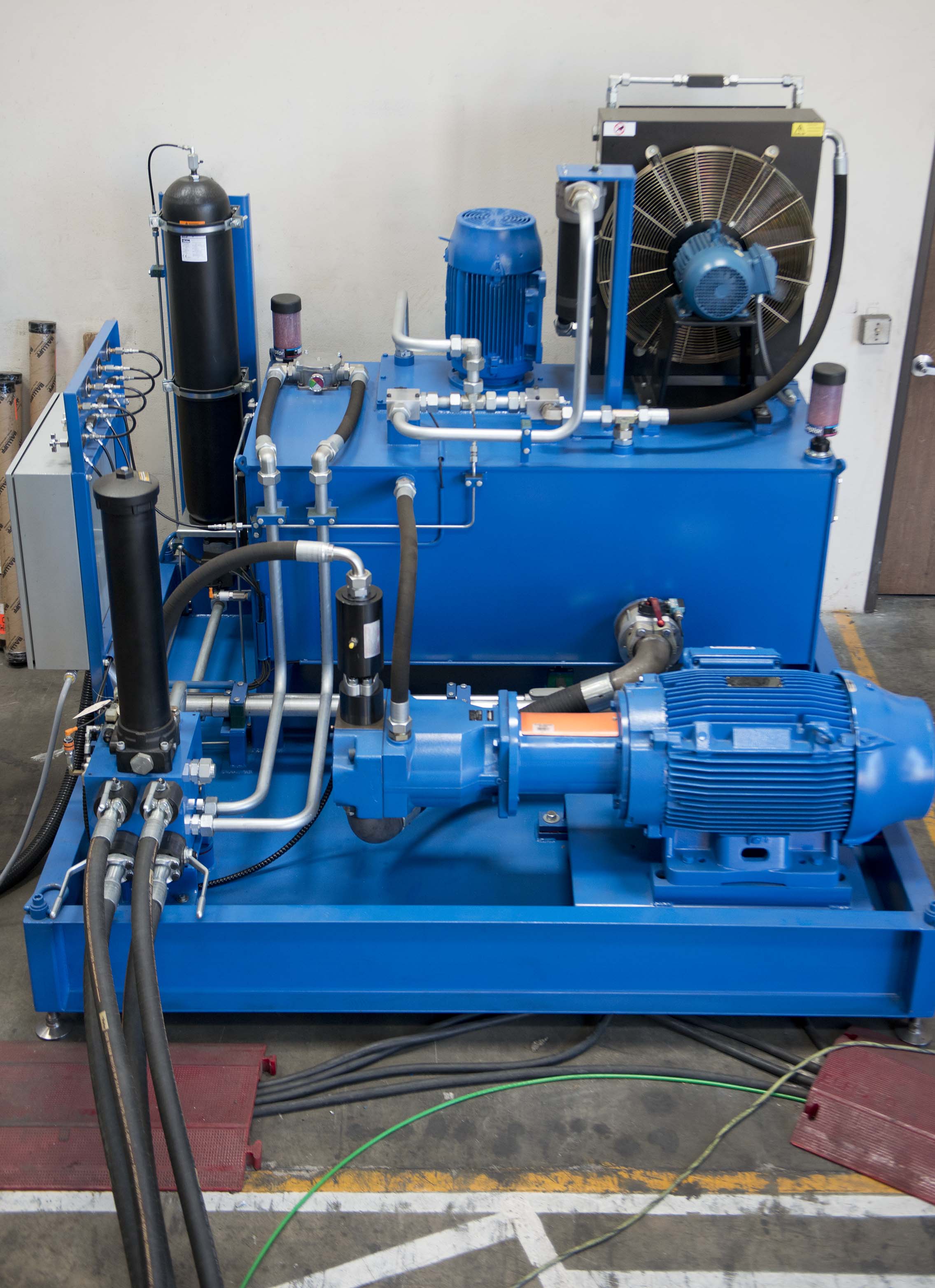
Forest City Gear is among the world leaders in fine and medium pitch gears, selling high-precision applications in medical, aerospace, defense, avionics, instrumentation and performance racing markets.
The control on these machines at Forest City Gear is the Sinumerik 840D from Siemens with specialized gear software. As Young explains, “The extensive gear software developments available are quite remarkable. Most have been a cooperative venture between a machine builder, the CNC builder and folks like us. The result has been software that’s specific to hobbing, shaping, gear grinding and thread grinding.” He also notes features of the Siemens CNC that have yielded positive impacts on the production at Forest City Gear, including “…sophisticated executive software for all machine movements and the fast program reading that allow us to cut and grind much faster, with more options such as reverse direction, segment cutting and combined operations, when compared to other controls we see.”

Company CEO Fred Young notes, “Most of the best gearmaking machines in the world use Siemens CNC and I’ve seen a lot of them, in my time.” He adds the controls have great flexibility, more motion precision and greater diagnostic capabilities than competitive brands he’s used at his company.
Typically, the CNC is used for all axis, rotary and spindle movements and the machine operators particularly appreciate the multiple standard cycles for cutting with degressive feeds, increasing speeds plus special cycles for gear tooth removal and reversing directions to improve finish or reduce cutter wear.
Forest City Gear cuts a wide variety of standard and exotic materials in the production of its gears and splines. These include titanium, Inconel, 4340, 300M, Vascomax 250 and 300, Nitralloy 135M, 9310, 4150, 4140, 8620, aluminum bronze, 13-8, 15-5, 17-4, 316 and 440 stainless, Hastelloy, Ferrium and numerous thermoplastics. The shop can carbide rehob to 60-62 RC and gear grind at all hardnesses.
Kevin Chatfield, a longtime Forest City Gear employee with 20 years’ CNC machine experience, works with the Samputensili grinders and says, “I’ve used all the brands of controls we have here… and for many jobs, no other control can do what the Siemens 840D can do. One example would be the internal, external and form-grinding I do on the Samputensili machine. If the other controls could perform these operations at all, which is doubtful, it would be a very slow process.”
Mark Cunningham, a 12-year veteran of CNC, runs the Gleason machines and notes the controls are very user-friendly. “The screens are easy-to-program and modify, then you get a clear picture of what’s happening at every step in the cycle. The precision is so good, we sometimes need to ‘lie” to the program to get what we want from the machine.”
Brian Turnbull, a newcomer to Forest City Gear, but a longtime machinist, had worked with a competing brand to Siemens CNC and was initially hesitant. “Then, as soon as I saw the easy layout, plus how quickly it could be set-up and go into action, with no trouble navigating at all, I was convinced Siemens was simply a better control.”
Young notes one last point about the CNCs on these machines. “These machine tools produce our most complex parts, including helical splines and internal gears most other shops simply cannot or will not make. The cycle and program read times on the Siemens controls are critical to our production work, plus these are the most expensive machines in the shop, so their run-time cost is the highest.” He adds, “Most of our jobs, though not all, here are short runs on very expensive materials. If the machine takes too long to complete the first part or has repeat rejects, we lose money — it’s that simple. I’m proud to say that neither our operators nor our production supervisors allow that to happen. And the controls on the machines are a big reason why we stay so successful in achieving that accuracy and consistently good part production at Forest City Gear.”
The company has remained among the leaders in the market for high-precision gears, owing to this strategy of buying the best machines, hiring the best gearmakers available and verifying the output of this 100-person shop by using the power of the industry’s leading quality lab, which occupies a cleanroom-level environment in the middle of the factory. As Young explains, “We do checking of our gears and splines at various test stations located throughout the shop, but the final proof resides in our quality lab. Our equipment is so sophisticated, even our competitors often bring us their work to have it checked. It’s one of the things that’s led to our current customer base of about 400 companies, about twenty percent of whom are other gear companies or gear producers themselves.”
For more information on this story, please contact:
FOREST CITY GEAR CO., INC.
Fred Young
CEO
11715 Main Street Roscoe, IL 61073
Toll-Free: 866-623-2168
Phone: 815-623-2168
Fax: 815-623-6620
Web: www.forestcitygear.com
Email: sales@forestcitygear.com
OR
SIEMENS INDUSTRY, INC.
DRIVE TECHNOLOGIES
MOTION CONTROL
MACHINE TOOL BUSINESS
390 Kent Avenue
Elk Grove Village, IL 60007
Phone: 847-640-1595
Fax: 847-437-0784
Web: www.usa.siemens.com/cnc
Email: SiemensMTBUMarCom.sea@siemens.com
Attention: John Meyer, Manager, Marketing Communication
Follow us on Facebook: www.facebook.com/SiemensCNC or Twitter: www.twitter.com/siemens_cnc_us.
—
Siemens Industry Sector is the world’s leading supplier of innovative and environmentally friendly products, solutions and services for industrial customers. With end-to-end automation technology and industrial software, solid vertical-market expertise, and technology-based services, the sector enhances its customers’ productivity, efficiency and flexibility. With a global workforce of more than 100,000 employees, the Industry Sector comprises the Industry Automation, Drive Technologies and Customer Services Divisions as well as the Metals Technologies Business Unit. For more information, visit http://www.usa.siemens.com/industry.
The Siemens Drive Technologies Division is the world’s leading supplier of products, systems, applications, solutions and services for the entire drive train, with electrical and mechanical components. Drive Technologies serves all vertical markets in the production and process industries as well as the infrastructure/energy segment. With its products and solutions, the division enables its customers to achieve productivity, energy efficiency and reliability. For more information, visit http://www.usa.siemens.com/drivetechnologies.
Continue reading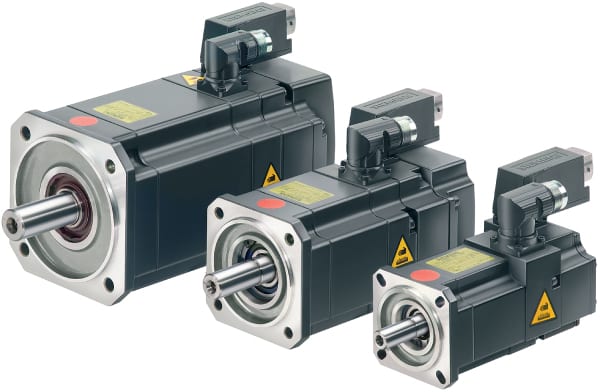
With a total of 6150 option pairings and 18 color choices, servomotors in the 1FK7 family can be configured to 110,700 possible designs. Options include stall torque and RPM rating, encoder style and bit resolution, holding brake functionality, shaft style, IP rating, AC line supply voltage and electronic nameplate recognition via Drive-Cliq®. 1FK7 geared motor options are not included in this program presently.
Siemens is now making this service available to customers in the U.S. market. With the motion controller Simotion® and the drive system Sinamics® S stocked in the United States, Siemens is also able to supply complete motion control systems in three weeks’ lead time.
According to Arun Jain, general manager, Siemens Motion Control Business, “We have made the commitment to significantly shorten servomotor delivery times. The 1FK7 family has a wide user base for motion control applications, so we have selected this very important line for our major customer service initiative. We have devised and implemented an entirely new protocol for motor manufacturing and production at our factories.”
For more information, visit www.usa.siemens.com/motioncontrol.
For specific product information and inquiries, call (800) 879-8079 ext. Marketing Communications or send an e-mail to: SiemensMTBUMarCom.industry@siemens.com.
Continue reading
Simulation in action: casting quality, realizing innovation, reducing costs
The 1400 °C hot cast iron melt gushes through the gate into the mold. The movement of the flowing metal in the casting rigging and in the gradually filling mold for printing press cylinders and the subsequent solidification process are only chaotic and accidental, at first glance. The engineers of Amstetten Foundry, which forms part of Heidelberger Druckmaschinen AG, are familiar with every detail of the casting system. They ran through the entire process in advance with simulation software. This enables them to predict precisely what the quality and characteristics of the cast iron cylinder will be, when it leaves the mold and is finally integrated in a Heidelberg printing press.
The Amstetten factory is one of the most up-to-date and efficient foundries in all of Europe. It acts as a center of excellence for the manufacture of castings, such as printing press side panels or cylinders, for the entire Heidelberg Group, which has a yearly revenue of three billion euros (~$4.4 billion) and 15,000 employees. The parts are core elements of the sheet-fed offset presses that Heidelberger Druckmaschinen AG, as the market leader, provides to users in the print media industry worldwide. “For our customers, just like for ourselves, the decision for Heidelberg is always a decision for quality,” is how Jürgen Schimmel, Director of Pattern & Casting Engineering describes the company’s vision, which he implements on a daily basis together with the 450 employees involved in casting production. This is because the quality of the individual presses to a significant degree depends on the quality of the castings produced in Amstetten.
Amstetten’s staff does not just produce castings for the Heidelberg Group: 50 external companies order large and small castings in differing batch sizes from the Amstetten foundry. Free market competition does not just make economic sense; it also serves to ensure that all processes are focused on achieving the highest quality, according to Schimmel.
“We have a clearly defined goal: economical casting production with consistently high quality. We see casting as part of an overarching process, beginning in design and finishing in reliably functioning, competitive end products,” Jürgen Schimmel says when formulating the “mission” of the Amstetten foundry. This level of quality is achieved by continuous IT support over the entire production process – from design of the components and patterns to the stable computer controlled melting and pouring processes.
Casting simulation bridges the gap between design and production
The planning department Pattern and Casting Engineering bridges the gap between computer-aided product design and actual production using MAGMASOFT®, the leading software for simulating casting processes. In doing so, the engineers rely on a technology regarded in the industry as one of the most important innovations of the last 50 years. This is because casting process simulation opens up the possibility of taking a look inside the former “black box” of the mold, to understand and predict precisely what happens during pouring and solidification of the melt. As a result, the foundrymen are in a position to accurately characterize the casting and production process as well as predict the casting’s properties before production has begun. What this means in practice is that the engineers are in a position to develop a casting with defined qualities at their computers. Correct production parameters for the casting process, with which the casting can be produced economically and reliably, can be developed with calculable quality. Before simulation technology became available, the individual development steps had to be taken “by hand” – from the part design to its realization as a casting by means of numerous, expensive test castings – and at the end there was still no guarantee that the process would indeed be reliable enough for the casting to be produced in the defined quality.
Save on costs, implement innovations
The foundry of Heidelberger Druckmaschinen AG makes use of simulation technology throughout the entire product and process development process, in order to save materials and costs in a highly price-sensitive market on the one hand, and to drive innovation and optimize component integration on the other.
For example, so-called return scrap is saved by “riserless” casting. Since the melt contracts when it cools, like any material, additional metal usually has to be introduced into the mold via the risers in order to avoid defects / porosity – so-called shrinkage cavities – in the casting. Appropriate design of the casting process reduces return scrap and material consumption. Before making the investment decision for MAGMASOFT®, the foundry had calculated that using simulation return scrap could be reduced by eight percent – which would lower annual material costs by a six-digit euro figure. Additional cost savings accrue from optimization over the entire process. Thanks to the calculated cooling times, it is safe to run production at the fastest possible rate.
For instance, it was possible to greatly reduce shrinkage cavities during the manufacture of a chain guide by reducing riser volumes and altering the gating system. This not only resulted in a significant quality improvement, but also led to a reduction of €15.80 (~$22.75) per part in manufacturing costs, primarily from a reduction of approximately 2.5 kg in return scrap. Given an annual production of approximately 300 pieces, this comes to cost savings of around €4,700 (~$6,768).
Thanks to solidification simulation, it was possible to reduce the number of risers from 5 to 2 together with a 69 kg reduction in return scrap during production of a gear wheel, which lowered manufacturing costs per piece by €31 (~$44.65).
Simulation pioneer as technological partner
As its technology partner for simulation, Heidelberg Foundry relies on a pioneer in this methodology in MAGMA Gießereitechnologie GmbH, Aachen. In the late 1980s, MAGMA transformed casting simulation from university research to practical application. Ever since, the resulting software solution, MAGMASOFT®,® has set technical standards when it comes to simulating casting processes. It simulates mold filling, solidification and cooling during the casting process as well as mechanical properties, residual stresses and distortion of the castings created.
MAGMASOFT® consists of a basis package and a series of additional modules which cover all casting process production steps. They support the user starting from the design of the component, the selection of the melt treatment and casting layout, through pattern design and mold production to final heat treatment and finishing. The MAGMASOFT® application spectrum covers all cast materials, such as gray and ductile cast iron as used at the Heidelberg Foundry as well as aluminum and steel. Every casting process can be simulated with the software in order to design and assess the casting and tooling layouts, cycle times and casting quality.
Simulation software selection criteria
“User-friendly operation, short preparation time until start of calculations, realistic representation of results – those were the leading functional criteria when we chose MAGMASOFT®,” explains Hans Frieß, Director of Planning/Material Management. “And of course, another factor was the potential for future developments in the software.” But it was not just the software’s functionality and quality that were relevant to the decision. MAGMA itself as simulation pioneer was a factor. Hans Frieß puts it like this: “MAGMA established casting process simulation technology as a practical tool. The industry owes its trust in simulation primarily to MAGMA. The associated market and technological leadership and references were also persuasive when we were thinking about introducing a solution.”
Amortization in one year
In the meantime, cooperation in Amstetten with MAGMASOFT® and MAGMA has a track record of about eight years. The investment was amortized within just one year instead of two, as calculated prior to acquisition. The use of the simulation solution has resulted in faster component development, higher component quality and more economic production. The technology has also assisted the foundry in terms of innovation: using MAGMASOFT made it possible to begin manufacturing larger, heavier types of components.
Simulation marketing
The software also plays an important role in marketing and sales. When potential customers inquire about a particular casting, they are not only provided with a price, but also a pledge of reliable component quality and delivery times, based on simulation results. “Thanks to our use of MAGMASOFT®, we have actually acquired customers. When we made the investment decision this effect was one we had neither expected nor taken into account,” Hans Frieß is pleased to note. MAGMA now occupies a correspondingly prominent place in marketing as well: there are numerous casting simulation visualizations on the foundry’s website, shown as recognizable screenshots from the MAGMA software.
Simulation communication
And something else has undergone further development on the basis of the simulation software: communication with the casting designers and the foundry floor. The designers quickly get reliable feedback on whether a new component design is “castable”, while production gets reliable information on how to handle the casting process to achieve the best result. Conversely, based on the documented simulation results, both parties with their expertise can prepare creative solutions, which in turn can then be quickly and easily checked using simulation.
Simulation in the future – knowledge management and service orientation
“Using casting process simulation has now become indispensable for foundries,” Hans Frieß sums up. This was the only way for them to become service providers, taking on design and consultative activities and cooperating more closely with the companies using castings. Moreover, the software protects against know-how loss, since the knowledge is no longer just in the head of an expert but instead stored in a way that can be reused in MAGMASOFT®‘s databases. Consequently, the partnership between foundry and software will intensify further in the time to come – and continue on the basis of a new software generation, which will be launched shortly.
Picture material:
Solidification simulation of a MAGMASOFT®-optimized casting for a Heidelberg printing press (here: gear wheel). Riser optimization produced savings of almost € 40,000 (~$57,600) on this single part.
About software for casting process simulation
Casting process simulation software considers the complete casting process including mold filling, solidification and cooling, and also provides the quantitative prediction of mechanical properties, thermally induced casting stresses and the distortion of cast components. Simulation accurately describes a cast component’s quality upfront before production starts, thus the casting layout can be designed with respect to the required component properties. This results in a reduction in pre-production sampling, but also the precise layout of the complete casting system leads to energy, material and tooling savings for the foundry.
The range of application of MAGMA solutions comprises all cast alloys, from cast iron to aluminum sand casting, permanent mold and die casting up to large steel castings. The software supports the user in component design, the determination of melting practice and casting methodology through to mold making, heat treatment and finishing. This saves costs consequently along the entire casting manufacturing line.
During the last 10 years, the use of casting process simulation has become a valuable business asset for many foundries. MAGMA5 now expands the capabilities of casting process simulation and will further accelerate the acceptance of this technology.
About MAGMA
MAGMA offers comprehensive solutions to the metal casting industry, casting buyers and casting designers worldwide. The MAGMA product and service portfolio includes the powerful modular simulation software MAGMASOFT®,with the newest release MAGMA5, as well as engineering services for casting design and optimization.
Today, MAGMASOFT® is used throughout the metal casting industry, especially for the optimization of cast components in automotive and heavy industry applications.
MAGMA Giessereitechnologie GmbH was founded in 1988 and is headquartered in Aachen, Germany. A global presence and support are guaranteed by offices and subsidiaries in the USA, Singapore, Brazil, Korea, Turkey, India and China. Additionally, more than 30 qualified partners represent MAGMA around the world.
-0-
For more information on this release, please contact:
Christof Heisser
President
MAGMA Foundry Technologies, Inc.
10 N. Martingale Road, Suite 425
Schaumburg, IL 60173
Phone 847-969-1001 ext. 225
Email cheisser@magmasoft.com
Agency contact:
Tim Daro
Bernard & Company
847-934-4500
Continue reading